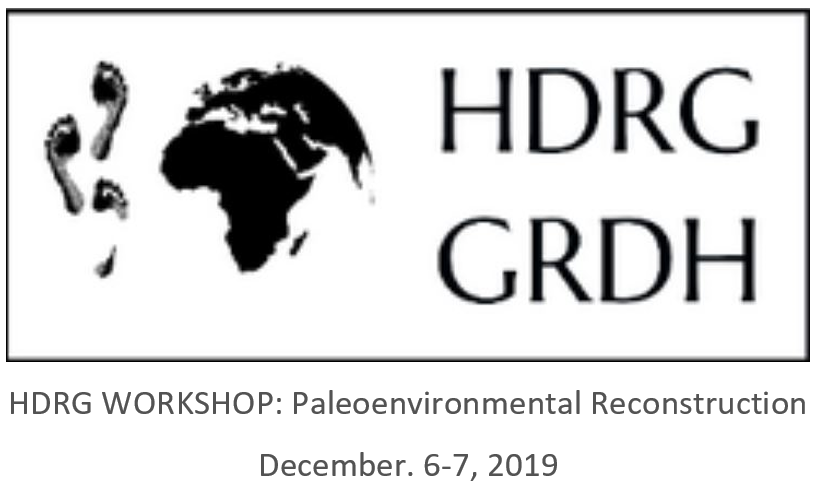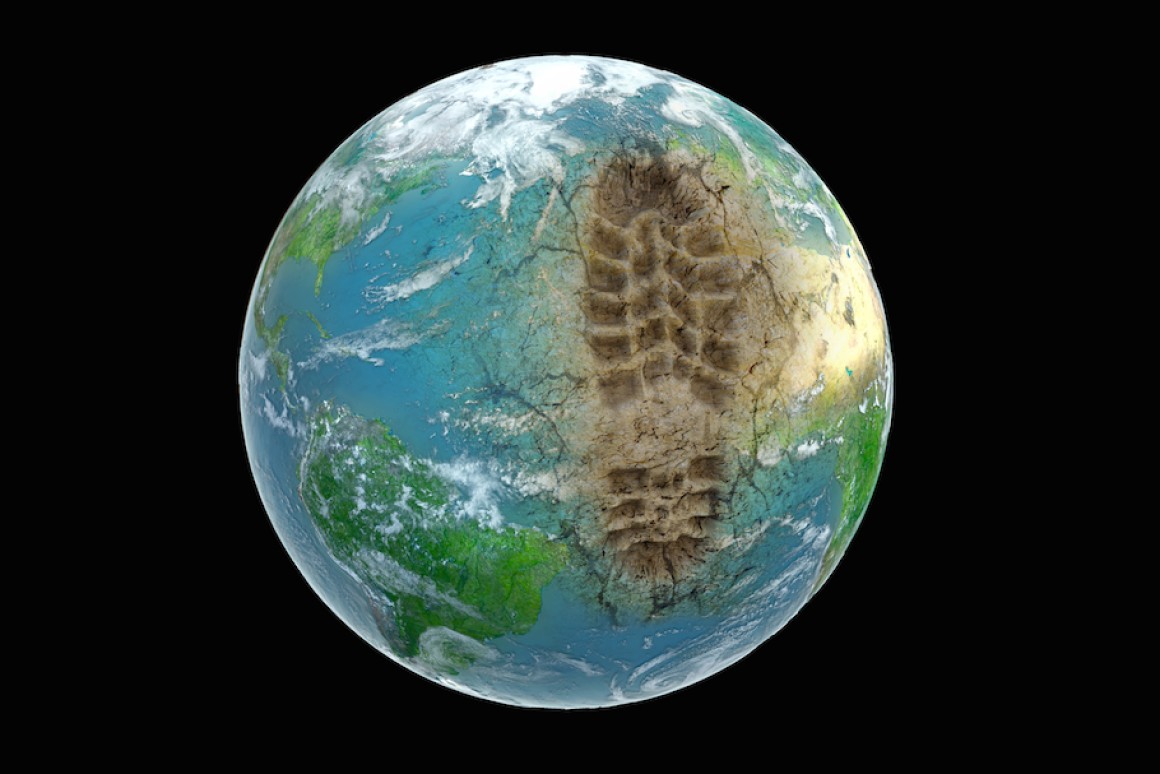NEWS
AWARDED GRANT
Fonds d’amorçage U de Montréal x Paris-Saclay 2025
“L'adaptation de l'Homme aux conditions environnementales et climatiques du dernier maximum glaciaire”
James King (UdeM), Masa Kageyama (CNRS/LSCE)
PH.D THESIS DEFENSE
Solène Boisard successfully defended her thesis entitled
Dynamiques démographiques et climatiques en Afrique du Nord-Ouest au cours du Pléistocène supérieur (130,000- 11,000 ans)
September 8th, 2025
AWARDED GRANT
SSHRC Insight/CRSH Savoir
"The impact of abrupt warming on cultural evolution: the Late Glacial Interstadial Complex in Europe"
A. Burke, F. Pausata, and T. Poisot
SOUTENANCE DE THÈSE DE DOCTORAT
Benjamin Albouy (HDRG PhD candidate) soutiendra sa thèse le 31 janvier 2025, à 13h00
"Paléogéographie et dynamiques de peuplement des derniers Néandertaliens d'Europe
(Stade isotopique marin 3; 60000 à 40000 ans avant le présent)"
Université de Montréal
C-2059, Carrefour des arts et des sciences, Pavillon Lionel Groulx
CONFERENCE
March 4th, 2024
"Sapiens and Neanderthal: a comparative study of climate resilience"
Ariane Burke
McDonald Institute for Archaeological Research - University of Cambridge
Info
SOUTENANCE DE THÈSE DE DOCTORAT
Simon Paquin (HDRG PhD candidate) soutiendra sa thèse le 2 juillet 2024, à 9h
“Les dispersions humaines en Europe au cours du Stade isotopique marin 3 (MIS 3) et leurs conditions climatiques et environnementales”
Université de Montréal
C-2059, Carrefour des arts et des sciences, Pavillon Lionel Groulx
CONFERENCE
November 18, 2023
"Perspectives on modelling human-environment interactions."
Ariane Burke
MSc Climate Sciences and Physical Geography - Seminar series, Bern University
CONFERENCE
November 17, 2023
“Climate resilience in two recent hominin species: a comparative study”
Ariane Burke
CLIOARCH Aarhus University, Denmark
SOUTENANCE DE THÈSE DE DOCTORAT
Samuel SEURU soutiendra sa thèse le 9 novembre 2023, à 9h00.
”Portée de l'exploitation du lapin (Oryctolagus cuniculus) par les humains au Dernier Maximum Glaciaire dans la Péninsule Ibérique: intégration de la Optimal Foraging Theory
avec la Modélisation à Base d'Agents”
Université de Montréal
C-2059, Carrefour des arts et des sciences, Pavillon Lionel Groulx
CONFERENCE
Samuel Seuru, PhD student,
will give a seminar at the University of Salamanca, Spain on
Tuesday, October 18, 2022
GIS DAY
As part of International GIS Day
- November 19, 2021 -
the Department of Geography at the University of Montreal is organising a conference to highlight student work (in any discipline) that uses cartographic tools.
HDRG members will be involved in session 297 of the 27th meeting of the European Association of Archaeologists (EAA2021)
this September.
SESSION #297: Modelling complexity: past interactions between people, climate and environment.
Conveying a sense of place and measuring the importance of environmental services for people in the past are difficult tasks. Understanding the relationship between prehistoric human populations and the world around them requires the ability to reconstruct key aspects of the palaeoenvironment – from large-scale drivers of environmental conditions, such as climate, to more regional variables such as vegetation cover and faunal communities. Computational archaeology is leading the way in the study of past human-environment interactions across spatial and chronological scales. With the increased availability of high-resolution climate models, palaeoecological proxies and the mature use of GIS-aided ecological modelling, archaeologists working in interdisciplinary settings are well-positioned to explore the intersection of human systems and environmental affordances and constraints. These methodological advancements provide a better understanding of the role humans played in past ecosystems – both in terms of their impact upon the environment and, in return, the impact of environmental conditions on human systems. They may also allow us to infer past ecological knowledge and land-use patterns that are historically contingent, rather than environmentally determined. This session seeks contributions that combine reconstructions of past environments and archaeological data with a view to exploring their complex interactions at different scales and invites scholars from varying disciplines and backgrounds to present, compare and contrast different modelling approaches.
See details here ←
BIOCHANGE webinar in the BIOCHANGE seminar series
(Aarhus, Denmark) Fall 2020
October 29th.
Guest speaker Professor ARIANE BURKE, University of Montreal, Canada https://qcbs.ca/member?profile=228
« The impact of habitat suitability on the structure of human populations during the Last Glacial Maximum (LGM) in Western Europe.»
HDRG members can now benefit from a preferential rate for courses offered by:
CONGRATULATIONS TO
FÉLIX MAROIS
(2nd cycle, co-supervision A. Burke and J. King)
Obtaining the CRSH scholarship for his master's study
‘Impact of wind transport on skeletal tissues: experimental taphonomy in the subarctic area.’
C-2059, Carrefour des Arts et des Sciences, Pav. Lionel-Groulx, 3150 Jean-Brillant.
This 2-day workshop is primarily designed to give the working groups in Workpackage 1 (paleoenvironmental reconstruction) and Workpackage 2 (paleoclimate simulations) a chance to present the data they have generated thus far. Day 1 will consist of presentations by each of the working groups followed by discussions focusing on exploring synergies between the working groups and between working groups and archaeologists. Day 2 will focus on deliverables and will be an opportunity to work towards producing draft publications. The goal is for participants to come away from the workshop with clear objectives and timelines for releasing data for Workpackage 3 and for publication of WP1 & 2 results.
Day 1: working group results
9:00-9:45 Producing regional climate models. Masa Kageyama & Mathieu Vrac (videoconference).
9:45-10:15 Loess and dust transport modelling for the Last Glacial in Western Europe. James King lab.
10:15-10:45 Coffee Break
10:45-11:30 Modelling European palaeoshorelines during the Last Glacial. Liliana Perez lab & Colin Wren.
11:30-12:00 Discussion/synthèse
12:00-13:30 Lunch
13:30-14:15 Pollen records and vegetation reconstructions for Last Glacial Western Europe. Anne de Vernal, Matthew Peros et Jena Zumaque
14:15-15:00 Modeling palaeo-monsoon conditions in Africa. Francesco Pausata.
15:00-15:30 Discussion
15:30-16:15 (public talk) « Le contexte environnemental de l'occupation du site Gravettien ancien de Amiens-Renancourt 1. The environnemental context of the Recent-final Gravettian occupation of Amiens-Renancourt 1 site.” Olivier Moine, P. Antoine, S. Coutard, G. Guérin, C. Hatté, C. Paris, S. Saulnier-Copard.
Dinner
Day 2: writing workshops
10:00-10:30 Coffee
10:30-12:00 Break up into working groups to discuss & plan data dissemination/publication
12:00-13:00 Lunch
13:00-15:00 Writing workshop
15:00-15:30 Final discussion: progress to date and planned working group publications.
30 october, 2019
11:30 AM
Conférence
UdeM, MONTREAL
Pavillon Lionel-Groulx, local C-3019
After having reviewed the latest advances in the analysis of the interactions between climate change, animal populations and prehistoric societies in southwestern France, we discussed the gray areas that still persisted and commented on research to go further, including the DeerPal project. This project aims, through the combination of four techniques of wildlife analysis, a better understanding of the paleoecology of cervids and seeks to define their role in the human-environment interactions in the past.
4 - 5 OCTOBER 2019
FIRST ANNUAL SYMPOSIUM, “ARCHAEOLOGICAL PERSPECTIVES ON THE ANTHROPOCENE”
UNIVERSITY OF TORONTO
Lash Miller Chemical Laboratories, Room 161
Saturday 5th: Julien RIEL-SALVATORE conference - “Pieces of the Anthropocene: Towards an Archaeology of the Ends of the World”
15 - 18 MAY, 2019
Annual Meetings of the Canadian Archaeological Association
QUEBEC CITY, CANADA
#SESSION. Taphonomy, Chemistry, Bones & Bugs.
ALBOUY B., MALLYE J.-B., MADELAINES., MAUREILLE B. et BAYLE P. (2019). When the Past is disturbed. Investigation of the archaeological potential of prehistoric deposits and bone assemblage from Sirogne Cave (Rocamadour, Lot, France). (ORAL COMMUNICATION)
8 October, 2019 12:30 pm
Weathering the storm: identifying key disruptors of human systems
UQAM, MONTREAL
201 ave. Président-Kennedy, Local PK-7605
Ariane BURKE
Homo sapiens is a widely distributed species with a proven ability to adapt to a range of climate types. Nevertheless, the archaeological record indicates that climate change may cause large-scale reorganisations of human systems. Understanding the nature of climate change at specific points in time is crucial to gaining an understanding of human/environment interactions and the mechanisms of human resilience. This goal serves a dual purpose, allowing climatologists to refine their modelling techniques while providing context for the application of spatially explicit archaeological models of past human adaptations. This talk examines how ten years of close collaboration between archaeologists and climatologists has allowed the Hominin Dispersals Research Group (HDRG) to address these topics and how we hope to apply this knowledge in the future.
11 - 15 April, 2019
84th Annual Meeting of the Society for American Archaeology (SAA)
PAQUIN S., SEURU S., BURKE A., GIRARD F., (2019) “How precise are my survey data ? GNSS receives test and comparison” (POSTER)
1 - 4 SeptEMBER, 2019
25th Annual Meeting of the European Association of Archaeologists: Beyond paradigms
BERN, SWIZTERLAND
Session #317 : Celebrating 25 years (EAA25) of collaboration: how archaeology and the Earth Sciences are coming together to solve real-world problems
Main organiser: Ariane BURKE (Canada, University of Montreal)
Co-organisers: Basil DAVIS (Switzerland, University of Lausanne); Julien RIEL-SALVATORE (Canada, University of Montreal)













